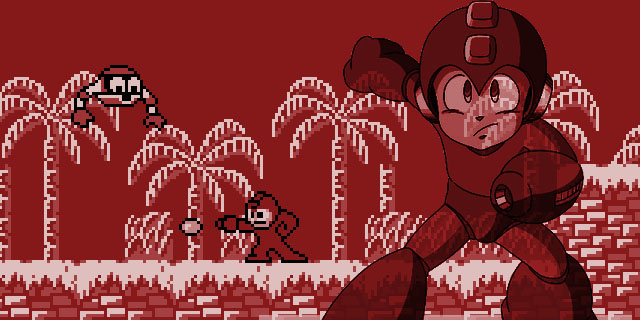
In From Pixels to Polygons, we examine classic game franchises that have survived the long transition from the 8- or 16-bit era to the current console generation.
Mega Man has been an outstanding franchise for Capcom. Since the Blue Bomber’s first appearance in 1987, he’s encountered his fair share of highs, lows and questionable decisions. Just last year, Mega Man celebrated his 25th anniversary. Today, we examine his past, present and 20XX future.
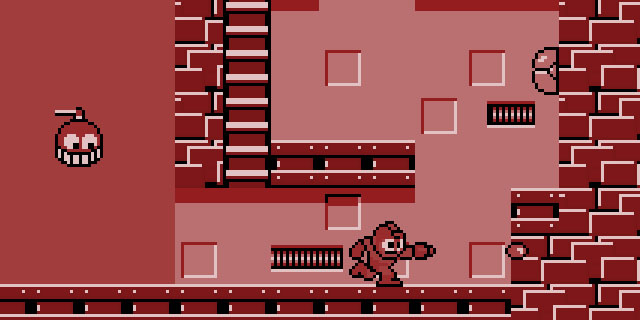
Eight-bit beginnings
 I doubt Capcom knew what it was getting into when it made the first Mega Man in 1987. Since then, the series has gone on to sell almost 30 million copies, and has gained a reputation for quality controls, rewarding gameplay and a timeless design. The concept is simple: you play a robot boy who is capable of running, jumping and shooting through side scrolling levels. At the end of each stage is a boss. This is fairly standard NES fare. However, Mega Man was one of the first games to allow you to choose the order in which you tackled the levels. It was a revolutionary idea. The core of the series’ gameplay, retained to this day, revolves around defeating the end boss of a level and acquiring its weapon which you can then use in other stages. Other robot bosses have certain weaknesses, making the Mega Man games a choose-your-own-path adventure of trying to figure out which boss has which weaknesses.
I doubt Capcom knew what it was getting into when it made the first Mega Man in 1987. Since then, the series has gone on to sell almost 30 million copies, and has gained a reputation for quality controls, rewarding gameplay and a timeless design. The concept is simple: you play a robot boy who is capable of running, jumping and shooting through side scrolling levels. At the end of each stage is a boss. This is fairly standard NES fare. However, Mega Man was one of the first games to allow you to choose the order in which you tackled the levels. It was a revolutionary idea. The core of the series’ gameplay, retained to this day, revolves around defeating the end boss of a level and acquiring its weapon which you can then use in other stages. Other robot bosses have certain weaknesses, making the Mega Man games a choose-your-own-path adventure of trying to figure out which boss has which weaknesses.
Powerful arcade battles
Mega Man: The Power Battle, released in arcades in 1995, featured select bosses from Mega Man 1 through 7, and players could choose which “story” (either MM 1-2, 3-6, or 7) to go through to compete for a high score. The game featured Mega Man, Proto Man and Bass as playable characters. There were no stages, making it one of the earlier examples of “boss rush” gameplay. Mega Man 2: The Power Fighters followed in 1996 and added Duo (from Mega Man 8) into the mix. Unlike the previous game, only one player could earn the Robot Masters’ power. Helpers were introduced for each character, and bosses now had an overdrive mode that would change up attack patterns when health was low. – Eric Albuen
Mega Man 2, still considered one of the best in the entire series, features a superb soundtrack and the most overpowered weapon in Mega Man history: the Metal Blade. Mega Man 3 was a landmark game in the series. It introduced the slide move, allowing for more varied levels and a quicker way of evading enemies. Proto Man and his trademark whistle mysteriously appeared in various stages. It also introduced Rush, Mega Man’s faithful robot dog companion.
Mega Man 4 continued adding gameplay elements to keep the series fresh, most notably the charge shot. Players could now hold the fire button to charge up the weapon and release a more powerful blast. This opened up a whole new world of strategy: do you gun through the level mashing the fire button, or do you charge up every time you go into a new area? Boss fights continued to be fun, although at this point they were starting to get a bit goofy. At first we had Ice Man, Fire Man and Metal Man, and now we were getting Toad Man, Ring Man and Dust Man? Mega Man 5, a personal favorite, saw the charge shot changed to allow an even longer (and more powerful) charge, Proto Man taking center stage as the villain and Beat (the attack bird) making his debut.
By the time Mega Man 6 released, the Super Nintendo was in full swing, so it wasn’t as largely played as the previous five. It’s a shame, because it holds up fairly well. The biggest addition here: Mega Man could combine with Rush to have rocket boosters, allowing for flight. This was a staple of the Mega Man series: any time a gameplay element was introduced, it was for a specific purpose that shaped the entire game. Levels may appear the same, but to make full use of Mega Man’s ever-expanding arsenal, new traps had to be laid out. New obstacles had to be overcome. Impossible jumps had to be made. It’s what makes this series stand out as one of the all-time greats. – Henry Skey
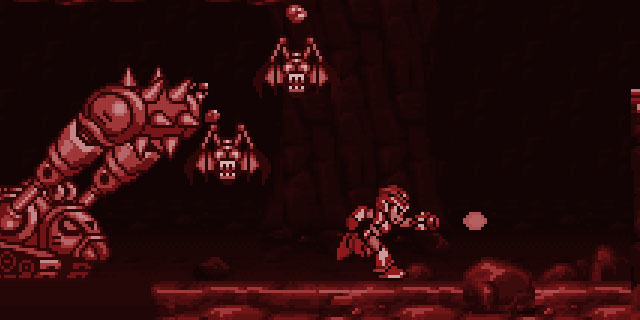
A more X-citing adventure
 In the ’90s, kids raised on the NES were starting to grow up, and entertainment desperately splashed on a new, “hardcore” coat of paint to try to keep up. The Power Rangers became ninjas, Batman was replaced by a dude that wore clawed armor and killed people and Mega Man suddenly found himself in a post-apocalyptic roboticized dystopia. Capcom wanted to take Mega Man in a different direction on the Super Nintendo while still maintaining the classic feel, and it succeeded. The Mega Man X series was bigger, bolder and yeah, pretty hardcore. The lighthearted ’80s rock soundtrack became in-your-face speed metal, the color palettes darkened and Mega Man’s eyebrows shot inward in a ’90s cool-guy glare.
In the ’90s, kids raised on the NES were starting to grow up, and entertainment desperately splashed on a new, “hardcore” coat of paint to try to keep up. The Power Rangers became ninjas, Batman was replaced by a dude that wore clawed armor and killed people and Mega Man suddenly found himself in a post-apocalyptic roboticized dystopia. Capcom wanted to take Mega Man in a different direction on the Super Nintendo while still maintaining the classic feel, and it succeeded. The Mega Man X series was bigger, bolder and yeah, pretty hardcore. The lighthearted ’80s rock soundtrack became in-your-face speed metal, the color palettes darkened and Mega Man’s eyebrows shot inward in a ’90s cool-guy glare.
Mega Man and Bass
Mega Man & Bass was a spinoff that was originally released on the Super Famicom in Japan, well after the series had transitioned to 32-bit platforms. The game would eventually be released in the US on the Game Boy Advance in 2002 for the series’ 15th anniversary. Regarded as one of the most difficult games in the series, this marked Bass’ first appearance as a playable character after his introduction in Mega Man 7. – Eric Albuen
The power of the Super Nintendo also allowed for new, faster mechanic territory. Mega Man could propel himself forward and launch himself across the screen, latch onto walls and use much more complicated weapons. Complication would eventually come to harm the X series. By the time the sixth entry hit the shelves, the overarching plot no longer made sense, the roster was full of unnecessary characters and the stage design went bonkers. That said, the first handful of games in the series are just as memorable as (if not more than) their happier Nintendo counterparts.
Mega Man 7 brought the series back to its roots, toning down a lot of the craziness of the X series and, debatably, suffering a bit in the process. Mega Man wasn’t nearly as agile as fans of the X games were accustomed to, and the style and tone were obviously quite a juxtaposition. Still, it brought a few new and interesting things to the table, including Auto, to whom you could give money dropped by enemies in exchange for items, and Bass, one of the more popular characters in the Mega Man universe.
The next game is a bit of an oddball. Mega Man 8 was the 32-bit debut of the character, bringing the blue bomber to both the PlayStation and Sega Saturn, complete with a shiny new aesthetic and well-animated but atrociously voice-acted anime cutscenes. Known for being pleasing to the eye but lacking in innovation otherwise, it was popular enough by default but ultimately fell to the wayside in favor of more creative entries. – Lucas White
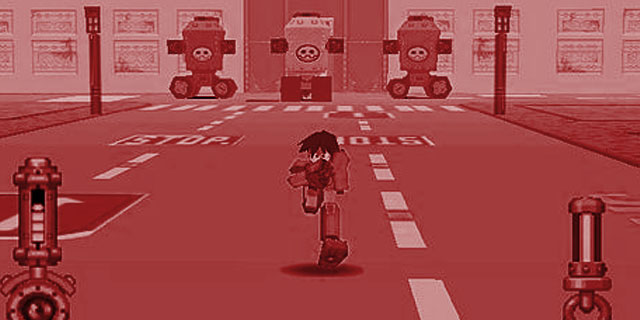
Legends are born
Crossing over
Street Fighter X Mega Man was a fan game developed by Seow Zong Hui and released for Mega Man‘s 25th anniversary. After showing the game to members of the Capcom Staff at EVO 2012, the company decided to assist in the development of the game. The free PC release featured several Street Fighter characters taking the place of the Robot Masters, and Mega Man can earn new powers based on their signature moves. – Eric Albuen
 The early victory of the 3D-based PlayStation over the 2D-based Saturn in the dawn of the 32-bit era signaled a trend of dominance of 3D games that swept over the industry for most of the generation. For a while, it was simply a foregone conclusion that formerly 2D series would need to make the leap to the 3rd dimension in order to remain relevant. Mega Man proved to be no exception. Fortunately, unlike many contemporaries making the switch, Inafune and company were able to recognize the inherent differences between the dimensions in terms of gameplay benefits and limitations.
The early victory of the 3D-based PlayStation over the 2D-based Saturn in the dawn of the 32-bit era signaled a trend of dominance of 3D games that swept over the industry for most of the generation. For a while, it was simply a foregone conclusion that formerly 2D series would need to make the leap to the 3rd dimension in order to remain relevant. Mega Man proved to be no exception. Fortunately, unlike many contemporaries making the switch, Inafune and company were able to recognize the inherent differences between the dimensions in terms of gameplay benefits and limitations.
Mega Man Legends was released in 1998, and brought the series formula into new territory by switching the focus to third-person shooting, with some light customization elements thrown in to offer variety and encourage exploration. By downplaying the 3D platforming elements — which, arguably, had yet to come into their own in terms of widely-accepted game design — Legends was able to deliver a fun, fluid challenge that offered a fascinating new world to explore. It’s filled with distinctive new characters, many of which have become staples of Capcom’s menagerie.
The sequel picked up where the story of the last left off and gave the same kind of adventure, but it made everything bigger, flashier and arguably more cohesive and engaging. The gameplay received several tune-ups and shifted slightly further into the realm of RPG mechanics, a trend which was particularly in vogue at the time. The bulk of the work, though, was done on fleshing out the story, world and characters introduced in the first game. This vision and attention to detail allowed the Legends subseries to garner a sizeable fanbase that still remains active and vocal to this day. It also spawned a spinoff, The Misadventures of Tron Bonne, which feels like a mix of Brutal Legend, Overlord and Armored Core, with the veneer of Wario Land. – Chris Dominowski
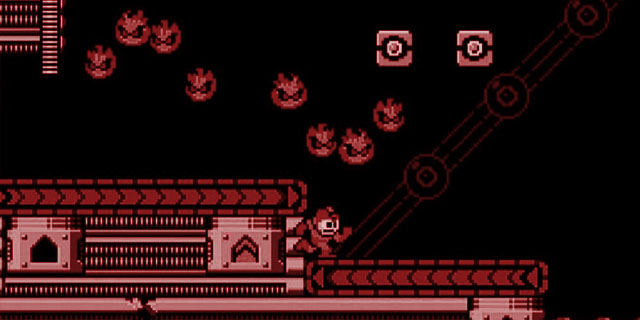
Going back to basics
 After a bit of silence from the main series, Capcom surprised everyone in 2008 by releasing Mega Man 9. The first numbered game for the series in almost a decade, it has Mega Man trying to prove the innocence of Dr. Light after a series of attacks from robots start happening around the world. It’s up to our hero to reveal Dr. Wily’s intentions and clear Dr. Light’s name. What shocked a lot of players about this specifically about this release was the game’s return to its original look. Using the first two games as its inspiration, Mega Man 9 very much played like those classics. The game included a time attack mode, as well as a challenge mode that had players completing certain tasks to clear each mission.
After a bit of silence from the main series, Capcom surprised everyone in 2008 by releasing Mega Man 9. The first numbered game for the series in almost a decade, it has Mega Man trying to prove the innocence of Dr. Light after a series of attacks from robots start happening around the world. It’s up to our hero to reveal Dr. Wily’s intentions and clear Dr. Light’s name. What shocked a lot of players about this specifically about this release was the game’s return to its original look. Using the first two games as its inspiration, Mega Man 9 very much played like those classics. The game included a time attack mode, as well as a challenge mode that had players completing certain tasks to clear each mission.
Mega Man plugs in
Mega Man Battle Network was yet another re-imagining of the universe, now casting the titular hero as a digital assistant to a young boy named Lan. Throughout the series, Lan controls Mega Man via a smartphone-esque device called a PET, and uses it to interact with and explore the virtual worlds contained inside everyday electronics and the internet itself. The battle system utilized two three-by-three grids for both you and your opponent, and attacks were carried out using collectible chips doled out at random from a deck during battle. While many argue the series overstayed its welcome, those who stuck around found one of the most pleasant and satisfying action-RPGs on the platform. – Chris Dominowski
After the positive response of Mega Man 9, Capcom followed up with Mega Man 10. Roboenza has struck the world, and it’s caused robots all over the world to malfunction. Roll falls victim to the disease. Dr. Wily claims to have made an antidote, but it was stolen by one of the infected robots. Knowing exactly what’s on the line, Mega Man sets out for another adventure to save not only his sister, but robots everywhere. The gameplay itself remains largely unchanged, but unlike the last entry, Proto Man is available from the start. Also included was the ability to adjust the difficulty, that would ultimately alter the level layout, damage output and enemy AI. The challenge mode from the last game made a return as well.
So where does the series go from here? No one is really sure, since Keiji Inafune left Capcom. After his departure, Mega Man Universe was canceled in March 2011, and Mega Man Legends 3 followed in July. Since then, there has been no news of Mega Man‘s future with Capcom. His upcoming appearance in next Super Smash Bros. game is the only sign of the Blue Bomber still being alive. I don’t think we’ll hear anything from Capcom about new Mega Man games soon, but with him still making appearances in other games, it’s obvious it still considers him to be a huge part of the company, even if it isn’t necessarily doing anything with him. – Eric Albuen
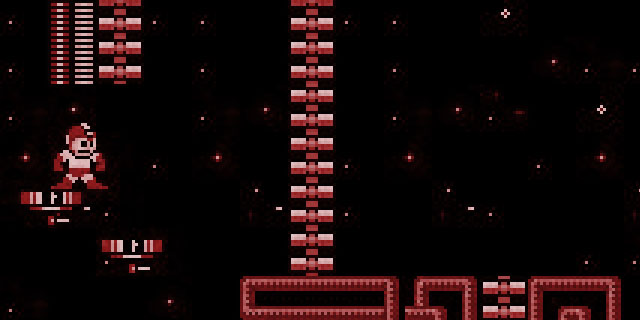
What’s the peak of the Mega Man series?
 Henry: It feels a bit unfair for me to try and say what the peak of the Mega Man series is, since I’ve only played 15 of the 410 games ever made. Still: Mega Man X2 is my choice.
Henry: It feels a bit unfair for me to try and say what the peak of the Mega Man series is, since I’ve only played 15 of the 410 games ever made. Still: Mega Man X2 is my choice.
 Lucas: Mega Man 2 will always be my favorite. Is that an objective thing? Probably not. But it has my favorite music, favorite levels and really smooth, almost minimalistic gameplay that makes subsequent speedrunning a blast that never gets old.
Lucas: Mega Man 2 will always be my favorite. Is that an objective thing? Probably not. But it has my favorite music, favorite levels and really smooth, almost minimalistic gameplay that makes subsequent speedrunning a blast that never gets old.
 Chris: The NES will always be known as home to some of the best platformers of all time. If we are talking about pure, objective quality, my vote would go to Mega Man 3. Even though I loved the sheer joy of the Battle Network games, I can’t deny the greatness of the classics.
Chris: The NES will always be known as home to some of the best platformers of all time. If we are talking about pure, objective quality, my vote would go to Mega Man 3. Even though I loved the sheer joy of the Battle Network games, I can’t deny the greatness of the classics.
 Eric: I personally love me some Mega Man X. While I liked the original series a lot, the X series added a lot of new features that kept the players on edge and their skills in check. The introduction of the darker storyline was also a welcome addition.
Eric: I personally love me some Mega Man X. While I liked the original series a lot, the X series added a lot of new features that kept the players on edge and their skills in check. The introduction of the darker storyline was also a welcome addition.
In our next installment, we’ll be withstanding the test of time with a look at the Civilization series. For more, check out the archive.



















